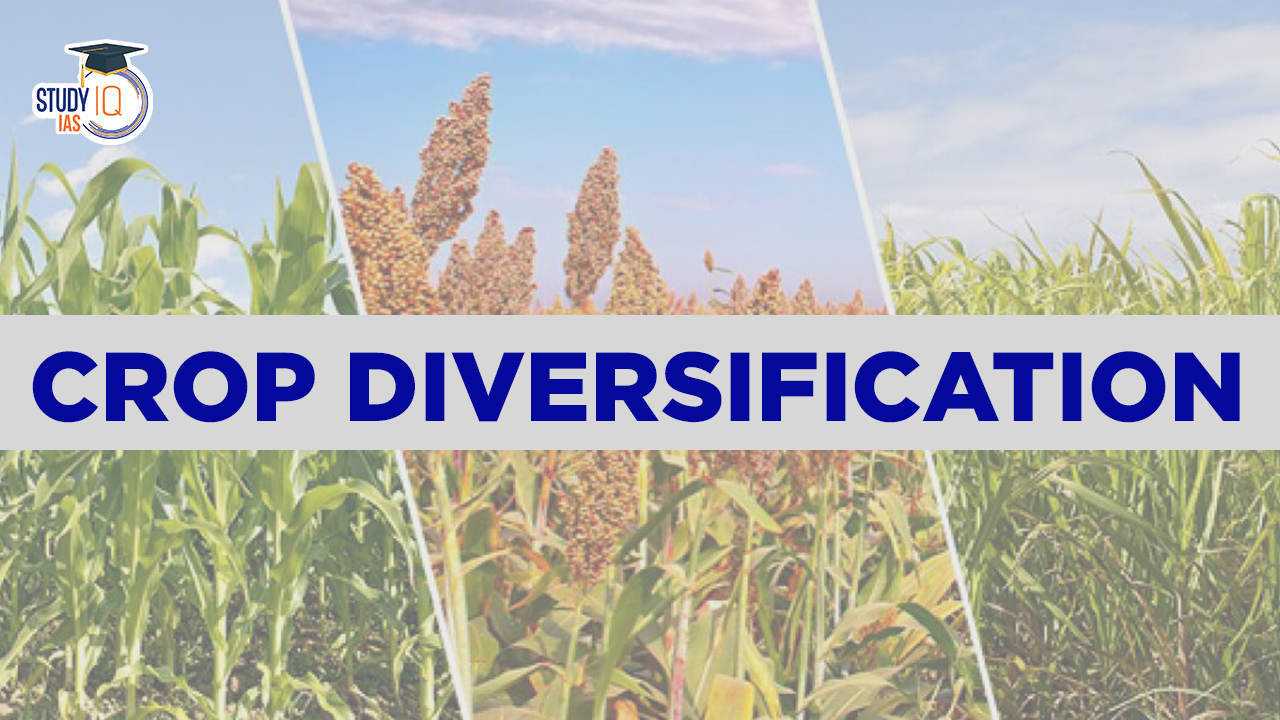Table of Contents
Context: The Indian government is encouraging crop diversification among farmers to reduce reliance on traditional crops and bolster sustainability and economic viability.
About Crop Diversification
Crop diversification refers to the practice of growing a variety of crops on a farm rather than relying on a single crop. It is an agricultural strategy aimed at reducing risks associated with monoculture, promoting sustainable farming practices, and enhancing overall farm resilience. Crop diversification is the practice of growing a variety of crops on a farm. This includes:
- Multiple Cropping: Planting multiple crop types within a single field to mitigate the risk associated with reliance on one crop, as diverse crops may withstand various pests, diseases, or adverse weather conditions differently.
- Intercropping: It is an all-encompassing term for the practice of growing two or more crops in close proximity; in the same row or bed, or in rows or strips that are close enough for biological interaction.
- Crop Rotation: Implementing a rotational plan for different crops across different seasons or years, aiding in maintaining soil fertility and reducing pest and disease cycles.
- Speciality Crop Adoption: Electing to grow crops that have higher market values, potentially increasing profitability due to their premium prices.
- Agricultural-Livestock Integration: Combining crop production with livestock rearing, which can enhance soil quality through natural fertilization and provide an additional stream of income from animal products.
Benefits of Crop Diversification
- Risk Management: Cultivating a range of crops can mitigate the financial impact of fluctuating market prices. For instance, if one crop’s price drops, the others may compensate financially.
- Climate Adaptability: Crop diversification strengthens farm resilience against climate variability. Some crops may survive adverse weather, offsetting the loss of more vulnerable varieties.
- Eco-friendly Practices: Practices like multi-cropping and intercropping can reduce dependence on harmful chemicals and excessive water use, which in turn decreases farming costs and environmental impact.
- Nutritional Diversity: Diverse consumer demands for a range of foods can promote the growth of various crops, contributing to improved nutrition and dietary variety.
- Financial Buffer: Growing multiple crops can serve as an economic buffer; if one crop’s market value declines, another’s success can balance the financial outcome.
- Ecosystem Restoration: Reintroducing diverse cropping can help re-establish ecological balance, enhance farmers’ incomes, and provide healthier food options, moving away from single-crop dependency.
We’re now on WhatsApp. Click to Join
| National Agricultural Cooperative Marketing Federation of India Ltd.(NAFED) |
|


 Diwali 2025 Calendar: Dhanteras to Bhai ...
Diwali 2025 Calendar: Dhanteras to Bhai ...
 Significance and History of Diwali Festi...
Significance and History of Diwali Festi...
 The New Power of Rare Earths: How China ...
The New Power of Rare Earths: How China ...




















